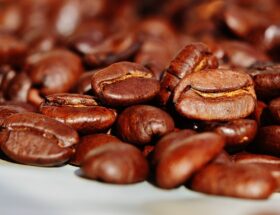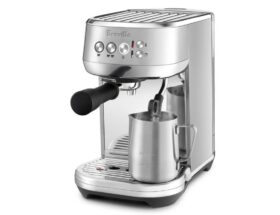
Whipped Cream and Espresso: A Stirring Debate in Coffee Culture
Welcome to the world of coffee culture, where the addition of whipped cream to espresso drinks has sparked a contentious debate. In this blog post, we will dive into the intriguing realm of coffee preferences and explore how a simple dollop of whipped cream can stir up strong opinions among coffee enthusiasts.
Did you know that whipped cream has been a popular accompaniment to coffee for centuries? However, its inclusion in hot cappuccinos and lattes has raised eyebrows and sparked discussions about authenticity and taste. Join us as we follow Rose, a curious barista, as she questions the rationale behind adding whipped cream to hot coffee drinks.
Table of Contents
- The Whipped Cream Dilemma: To Whip or Not to Whip?
- Preferences Vary: From Avoidance to Selective Indulgence
- Embracing Alternatives: Skim Milk and Beyond
- The Clash of Authenticity and Evolving Tastes
- Unveiling the Intricate Tapestry of Personal Preferences and Regional Traditions
- The Ever-Evolving World of Coffee Appreciation
- The Final Sip
- Step by Step Guide
- FAQ on Whipped Cream and Espresso
- Why do some people dislike putting whipped cream on hot cappuccinos or lattes?
- What are the different preferences of coffee drinkers regarding whipped cream?
- How does whipped cream affect the taste or appearance of coffee?
- What is the proper coffee etiquette when it comes to whipped cream?
- How should I order or make coffee drinks with whipped cream?
- Conclusion
The Whipped Cream Dilemma: To Whip or Not to Whip?
As a passionate barista named Rose, I often find myself questioning the rationale behind adding whipped cream to hot cappuccinos and lattes. It’s a divisive topic in the coffee world that sparks countless debates and stirs up strong opinions. So, let’s dive into the rich tapestry of coffee culture and explore the various perspectives on this controversial addition.
Preferences Vary: From Avoidance to Selective Indulgence
When it comes to whipped cream in coffee, everyone seems to have their own preferences. Some purists argue that it masks the natural flavors of the coffee and dilutes the essence of the beverage. They believe that a well-crafted espresso should be enjoyed in its purest form, unadorned by any artificial additions. On the other hand, there are those who reserve whipped cream only for iced drinks or specific beverages, like mochas or frappuccinos, where the sweet and creamy topping complements the chocolate or cold elements.
Embracing Alternatives: Skim Milk and Beyond
If whipped cream isn’t your cup of tea (or coffee), there are alternatives to consider. Skim milk, for instance, provides a lighter and healthier option for those looking to reduce the caloric content of their beverage. Non-dairy alternatives such as almond, soy, or oat milk are gaining popularity for their unique flavors and ability to froth, adding a velvety texture without overpowering the coffee’s character.
The Clash of Authenticity and Evolving Tastes
Coffee culture is deeply rooted in tradition, and many argue that adding whipped cream alters the authenticity of classic espresso recipes. They believe that respect for the origins and history of coffee should take precedence over personal preferences. However, as tastes evolve and palates become more adventurous, many coffee enthusiasts embrace new and innovative ways to enjoy their favorite beverage. It’s a clash between the old and the new, and the verdict is still out on which side prevails.
Unveiling the Intricate Tapestry of Personal Preferences and Regional Traditions
At its core, the whipped cream debate reveals the intricate tapestry of personal preferences and regional traditions within the coffee world. Different cultures have their own unique approaches to coffee, and what might be frowned upon in one region is celebrated in another. Exploring these cultural intricacies not only enriches our understanding of coffee as a global phenomenon but also encourages us to appreciate the diversity of taste preferences.
The Ever-Evolving World of Coffee Appreciation
As the coffee landscape continues to evolve, so too do our tastes and preferences. The addition of whipped cream to espresso drinks represents just one aspect of this transformation. With new trends emerging and diverse preferences surfacing, coffee appreciation is becoming more inclusive and accommodating to a wide range of palates and dietary needs.
The Final Sip
As Rose, the inquisitive barista, questions the rationale behind the whipped cream debate, one thing becomes clear: the world of coffee is far from monolithic. Choices like adding whipped cream to hot cappuccinos and lattes reveal a complex interplay of personal preferences, regional traditions, and the ever-evolving landscape of coffee appreciation. So, go ahead and savor your coffee however you like it, whether with a dollop of whipped cream or without. After all, coffee is meant to be enjoyed in a way that brings you the most pleasure.

Step by Step Guide
For those who enjoy the indulgent addition of whipped cream to their coffee, here’s a step by step guide on how to incorporate it into your espresso drinks:
Step 1: Prepare your espresso
Start by brewing a strong shot of espresso. This will serve as the base for your whipped cream creation. If you don’t have an espresso machine at home, you can use a stovetop espresso maker or even a French press to make a strong coffee concentrate.
Step 2: Whip the cream
In a mixing bowl, pour in the desired amount of heavy whipping cream. Using a whisk or an electric mixer, beat the cream until it reaches a thick and fluffy consistency. Add a touch of sugar if desired for a hint of sweetness.
Step 3: Top your espresso
Once you have your whipped cream ready, it’s time to crown your espresso with this creamy delight. Carefully scoop a generous dollop of the whipped cream onto the surface of your espresso. You can create beautiful patterns by using the back of a spoon or a piping bag.
Step 4: Optional additions
If you want to enhance the flavor of your whipped cream and espresso combination, you can sprinkle some cocoa powder, cinnamon, or crushed nuts on top. These additional touches will add a delightful aroma and visual appeal to your drink.
Step 5: Enjoy your creation
Now that you have completed the process, take a moment to appreciate the flavors and textures at play. The creamy whipped cream will mingle with the rich and robust espresso, creating a velvety mouthfeel with each sip.
FAQ on Whipped Cream and Espresso
Why do some people dislike putting whipped cream on hot cappuccinos or lattes?
Some people believe that espresso drinks like cappuccinos and lattes already have milk foam or froth which adds to the taste and texture of the drink. Adding whipped cream, in there opinion, alters the original taste and consistency of these espresso drinks.
What are the different preferences of coffee drinkers regarding whipped cream?
Preferences vary greatly among coffee drinkers. Some never use whipped cream, while others only use it on iced drinks. There are those who prefer it on specific drinks like mocha or frappe. Some even opt for alternatives like skim milk instead of whipped cream.
How does whipped cream affect the taste or appearance of coffee?
Whipped cream can significantly alter the taste and appearance of coffee. It adds a sweet, creamy flavor that can mask the bitterness of coffee. In terms of appearance, it adds a layer of white froth on top of the drink, which can be aesthetically pleasing to some but not to others.
What is the proper coffee etiquette when it comes to whipped cream?
There’s no hard and fast rule when it comes to using whipped cream in coffee. It largely depends on personal preference. However, traditional Italian recipes of espresso, cappuccino, and latte usually do not include whipped cream. So, if you’re a purist or prefer traditional methods, you might skip the whipped cream.
How should I order or make coffee drinks with whipped cream?
When ordering at a cafe, simply ask the barista to add whipped cream to your drink. If you’re making coffee at home, you can add whipped cream on top of your coffee after it’s been brewed. Keep in mind that the cream will melt faster on hot drinks, so it’s best to serve immediately.
Conclusion
Remember, the addition of whipped cream is a personal choice, and not everyone enjoys it in their coffee. If you prefer an alternative to whipped cream, consider using skim milk or non-dairy creamers to add a touch of creaminess without the extra calories.
Experiment with different variations and find the perfect balance that suits your taste buds. Whether you enjoy whipped cream in hot cappuccinos or reserve it for iced coffees, the possibilities are endless.
In conclusion, the addition of whipped cream to espresso drinks uncovers the intricate tapestry of personal preferences, regional traditions, and the ever-evolving world of coffee appreciation. We encourage you to share your thoughts and preferences in the comments section below. Join the conversation and let your voice be heard.
For more engaging coffee content, visit Ten Coffees.









